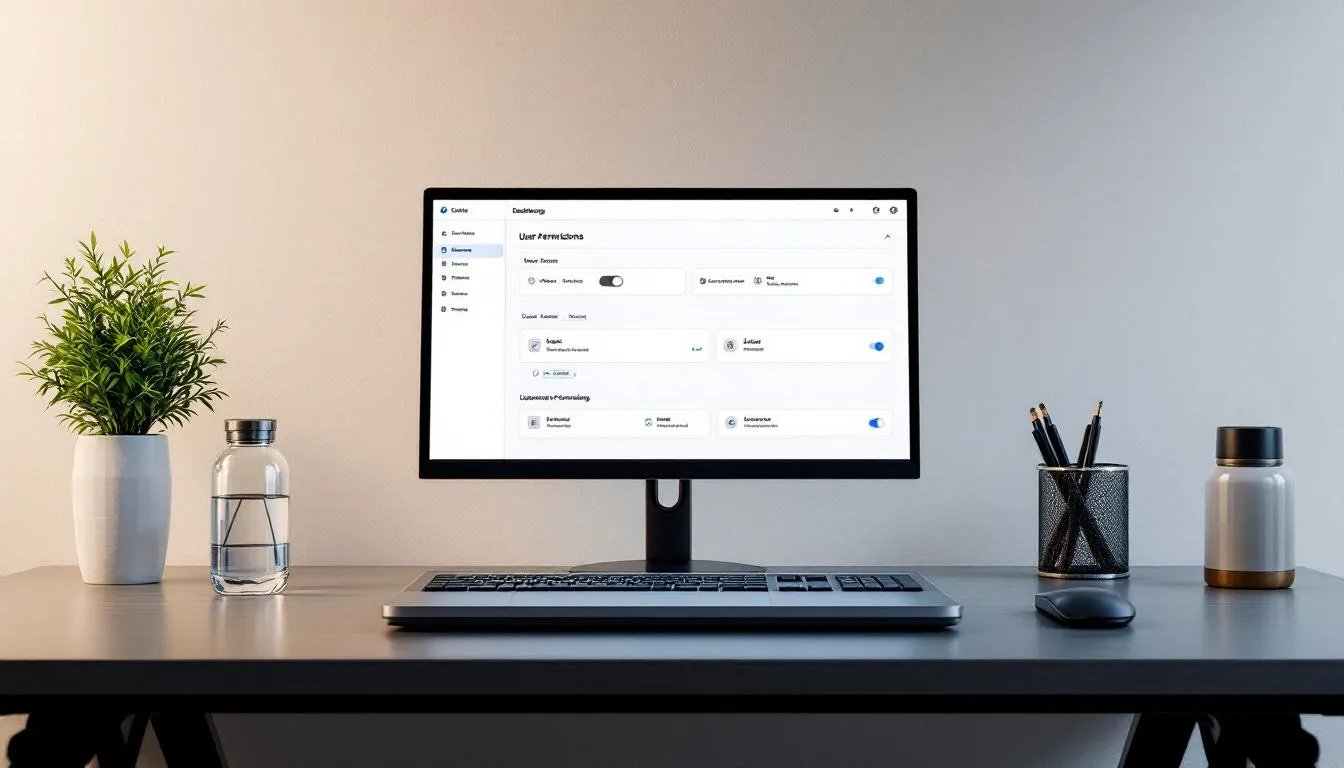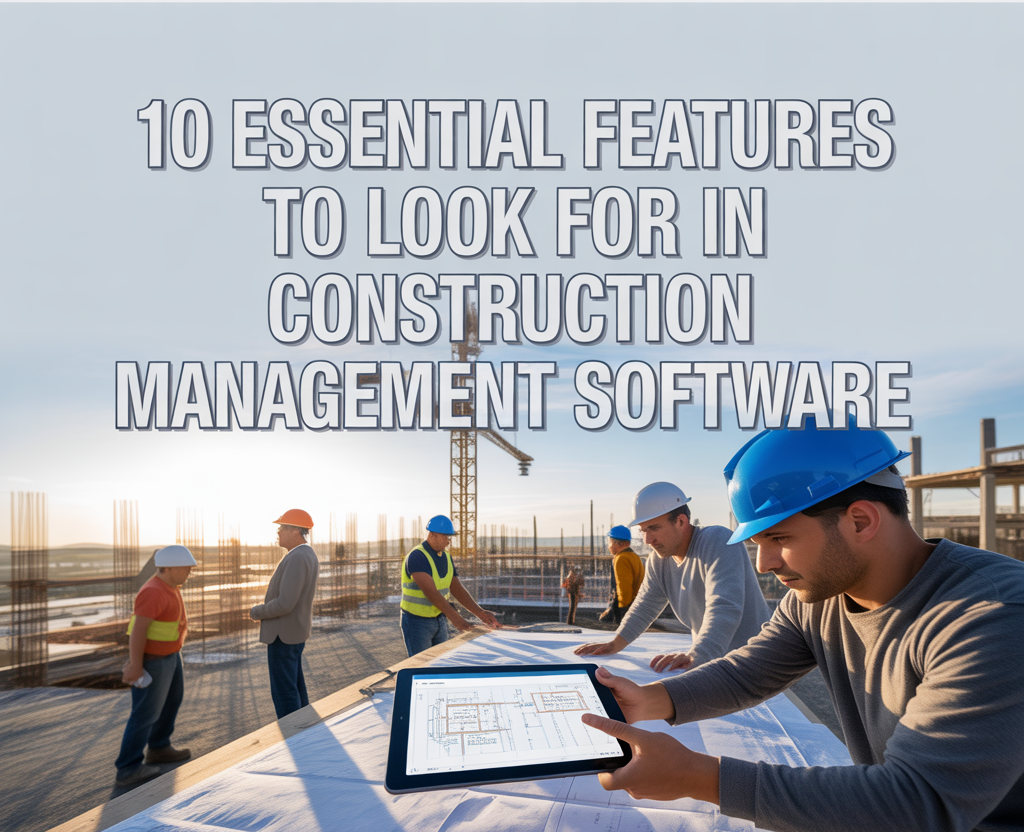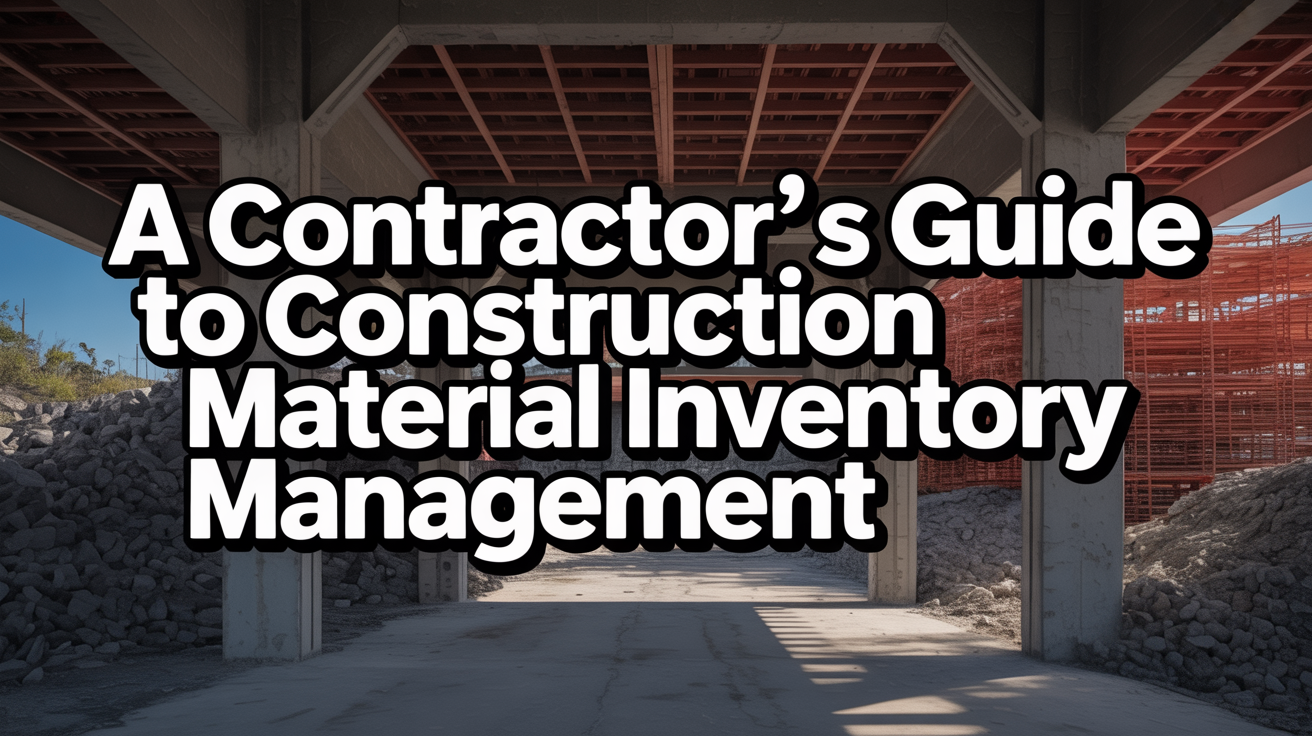10 Essential Features to Look for in Construction Management Software
Introduction
Construction projects are becoming more complex with each passing year. From managing multiple teams and resources to ensuring compliance with safety regulations, there’s a lot on the line. The right construction management software can make all the difference by streamlining operations and keeping everything organized. With so many moving parts, it’s no wonder that companies are turning to technology to stay ahead of the curve 🚀.
Selecting the right software isn’t just about convenience; it’s about survival. Without the proper tools, delays, budget overruns, and miscommunication can derail even the most well-planned projects. That’s why understanding the essential features to look for is crucial before committing to any platform. Let’s dive into what makes a construction management tool truly indispensable.
Project Scheduling and Real-Time Tracking
One of the most critical components of construction management software is project scheduling. It allows you to assign tasks, set deadlines, and track dependencies between different activities. When schedules are well-organized, teams can avoid bottlenecks and ensure smooth workflows. But here’s the kicker-real-time tracking takes this to another level. With live updates, managers can spot issues as they arise and address them immediately, reducing delays and boosting transparency ✨.
Real-time data also empowers proactive decision-making. For example, if a task is falling behind schedule, alerts can notify the team so adjustments can be made on the fly. This keeps projects running like clockwork and ensures everyone stays aligned. Now, let’s talk about how document management fits into the picture.
Comprehensive Document Management
Imagine having all your project documents-plans, RFIs, quotes, invoices, and purchase orders-in one secure place. That’s exactly what comprehensive document management offers. Not only does it save time, but it also reduces the risk of losing important files or sharing sensitive information with unauthorized users 🔐. Access permissions ensure that only the right people can view or edit specific documents.
Beyond storage, these systems often include version control, which prevents confusion caused by outdated files floating around. By centralizing document management, teams can collaborate more efficiently and focus on getting the job done. Speaking of collaboration, let’s explore how communication tools enhance teamwork further.
“The best software should offer comprehensive features like project scheduling, real-time data access, document management, and communication tools. Popular construction management software improves project delivery by streamlining processes, enhancing communication, and providing real-time insights into project progress.” -StruxHub
Robust Collaboration and Communication Tools
In construction, clear communication can make or break a project. Robust collaboration tools allow field and office teams to stay connected through instant messaging, notifications, and cloud-based updates. No more waiting for emails to bounce back and forth-everything happens in real time 💬. This ensures that everyone is always on the same page, whether they’re on-site or working remotely.
“The ability to plan and keep track of projects is one of the most important parts of construction management software. Construction projects often involve multiple teams, timelines, and dependencies. Missing deadlines or misallocating resources can lead to costly delays.” -Construction Cost Accounting
Integrated communication platforms also eliminate the need for external apps, creating a seamless workflow. When questions arise or challenges pop up, teams can resolve them quickly without missing a beat. Next, we’ll take a closer look at how resource and workforce management plays a key role in project success.
“Construction planning software lets you share and manage documents with project members through a secure network. With this feature, you can share documents with the relevant team members and limit access to a particular folder.” -Bridgit
Resource and Workforce Management
Efficiently managing your workforce is just as important as managing materials and equipment. The best construction management software lets you allocate tasks based on employee skills and availability. You can forecast labor needs, track performance, and optimize schedules to keep productivity high 📊. This feature helps avoid overworking staff while ensuring deadlines are met.
“Construction management software should include a component that helps keep documents organized for quotes, invoices, purchase orders, and other key information…” -BairesDev
Additionally, tracking employee hours and assignments provides valuable insights into operational efficiency. With better workforce visibility, managers can make informed decisions that benefit both the team and the project. Onward to financial management tools, which play a vital role in profitability.

“Collaboration and sharing. Construction projects aren’t always straightforward and it’s important to be able to share information in real time to sort out any challenges without resorting to outside systems such as email.” -BairesDev
Financial Management and Budgeting Tools
Keeping projects within budget is a top priority, and financial management tools are designed to help you do just that. These features enable you to track expenses, manage purchase orders, generate invoices, and forecast costs-all in one place 💰. Having an accurate overview of your finances ensures that you can identify potential overruns early and take corrective action.
“You can use software to manage workforce allocation on current and upcoming projects by designating the right people and considering their potential.” -Bridgit
Moreover, detailed reporting capabilities give stakeholders peace of mind, showing where every dollar is going. Financial clarity not only boosts confidence but also maximizes profits. Up next, we’ll discuss inventory and equipment management, another cornerstone of successful projects.
“Requirements for Construction Management Software · 2. Financial Management Capabilities…” -Knack
Inventory, Equipment, and Fleet Management
Tracking inventory levels and equipment usage is essential for minimizing waste and downtime. Construction management software often includes tools for dispatching assets, scheduling maintenance, and monitoring usage patterns 🔧. Proactive maintenance alerts can prevent costly breakdowns, keeping your fleet and machinery in top shape.
“Construction management software takes the pressure off by utilizing equipment and fleet management tools. This feature not only gives you the ability to handle dispatch and allocation tracking, but it also allows you to proactively schedule maintenance by setting usage and timeline alerts…” -Knack
With better visibility into asset utilization, you can allocate resources more effectively and reduce idle time. This translates to higher productivity and lower operational costs. Safety and compliance are equally important, so let’s examine those features now.
“Safety management tools are one of the most crucial construction management software requirements. Incident reporting systems document and analyze accidents that occur at job sites to help you improve future safety practices and track OSHA and FMSCA compliance.” -Knack
Safety and Compliance Management
Safety should never be an afterthought in construction. Modern software solutions come equipped with incident reporting systems, safety inspection checklists, and real-time alerts to keep workers safe ⚡. These tools help maintain compliance with OSHA standards and other regulations, reducing the risk of fines or legal issues.
“Construction management software should be cloud-enabled to ensure all parties can access the application from anywhere. For example, contractors should be able to see their assignments from the job site.” -BairesDev
Besides protecting employees, robust safety management fosters a culture of accountability. When incidents are documented and analyzed, companies can learn from past mistakes and implement preventive measures. Moving forward, let’s explore how remote access enhances flexibility on the job site.
“Real-time data is a critical component of effective construction project management. It provides superintendents with instant access to the latest project information, allowing for timely decision-making and proactive problem-solving.” -StruxHub
Remote Access and Mobile Functionality
Gone are the days when managers had to be tied to their desks. Cloud-based construction management software enables remote access, allowing teams to update progress, share documents, and manage operations from anywhere 🌍. Whether you’re in the office or out in the field, you’ll have the information you need at your fingertips..
This mobility ensures that nothing falls through the cracks, even when you’re miles away from the site. Real-time updates mean decisions can be made faster, improving overall efficiency. Data analytics is another powerful tool that complements this accessibility, so let’s dig deeper.

Data Analytics and Reporting
Data-driven insights are transforming the construction industry. Advanced analytics dashboards provide real-time metrics on project performance, helping managers detect trends and anticipate challenges 📈. With these tools, you can make smarter decisions backed by hard evidence rather than guesswork.
Reporting features simplify the process of communicating progress to clients and stakeholders. Clear visuals and summaries make it easy to demonstrate value and justify expenditures. Integration and scalability round out our list of must-have features, so let’s wrap things up with those last few points.
Integration and Scalability
A great construction management platform integrates seamlessly with existing tools like accounting software and BIM systems. This interoperability ensures that data flows smoothly across departments, eliminating silos. Additionally, scalable solutions grow with your business, accommodating new projects and expanding teams without skipping a beat.
Customization and User Permissions
Every construction company operates differently, which is why customization is key. The ability to tailor workflows, fields, and user roles ensures that the software adapts to your unique processes. Setting user-specific permissions protects sensitive data and maintains security across the organization.
Customer Support and Training
Even the best software won’t deliver results if your team doesn’t know how to use it. Responsive customer support, thorough onboarding programs, and ongoing training resources are essential for maximizing ROI. A vendor that prioritizes education and assistance sets its clients up for long-term success.
Frequently Asked Questions
- What are the top must-have features in construction management software?
- How does document management improve construction project efficiency?
- Why is real-time project tracking important in construction?
- How do safety management tools help reduce incidents on site?
- What should I consider when choosing between different construction management platforms?
Conclusion
Choosing the right construction management software is a game-changer for any firm. By incorporating the 10 essential features outlined above, you can streamline operations, mitigate risks, and foster collaboration among teams. From real-time tracking to robust financial tools, these capabilities work together to ensure smoother project delivery and better outcomes 🏗️.
Before making a decision, assess your specific needs and compare available options. Platforms like Nektar.io offer cutting-edge solutions tailored to the demands of modern construction projects. Investing in the right software today paves the way for greater efficiency, compliance, and profitability tomorrow. Don’t wait-start exploring your options now!



